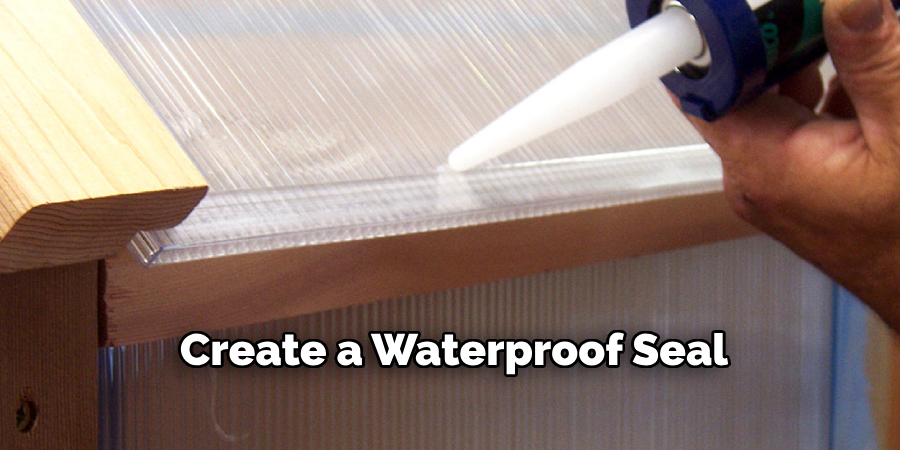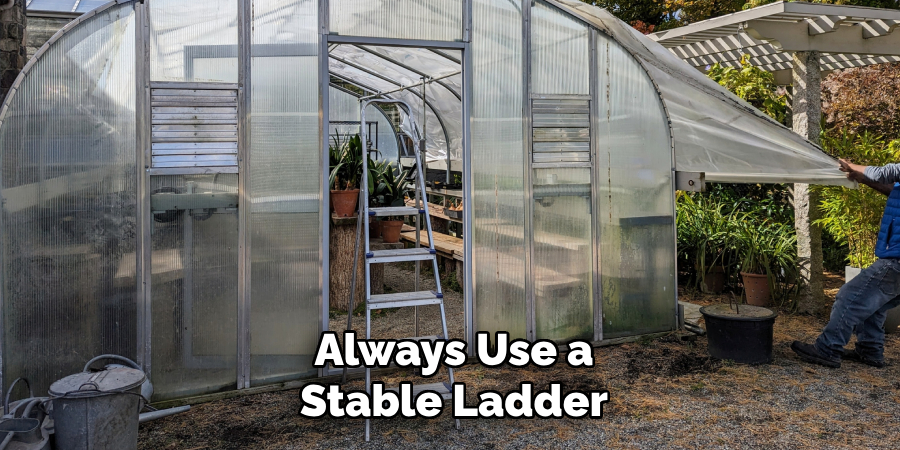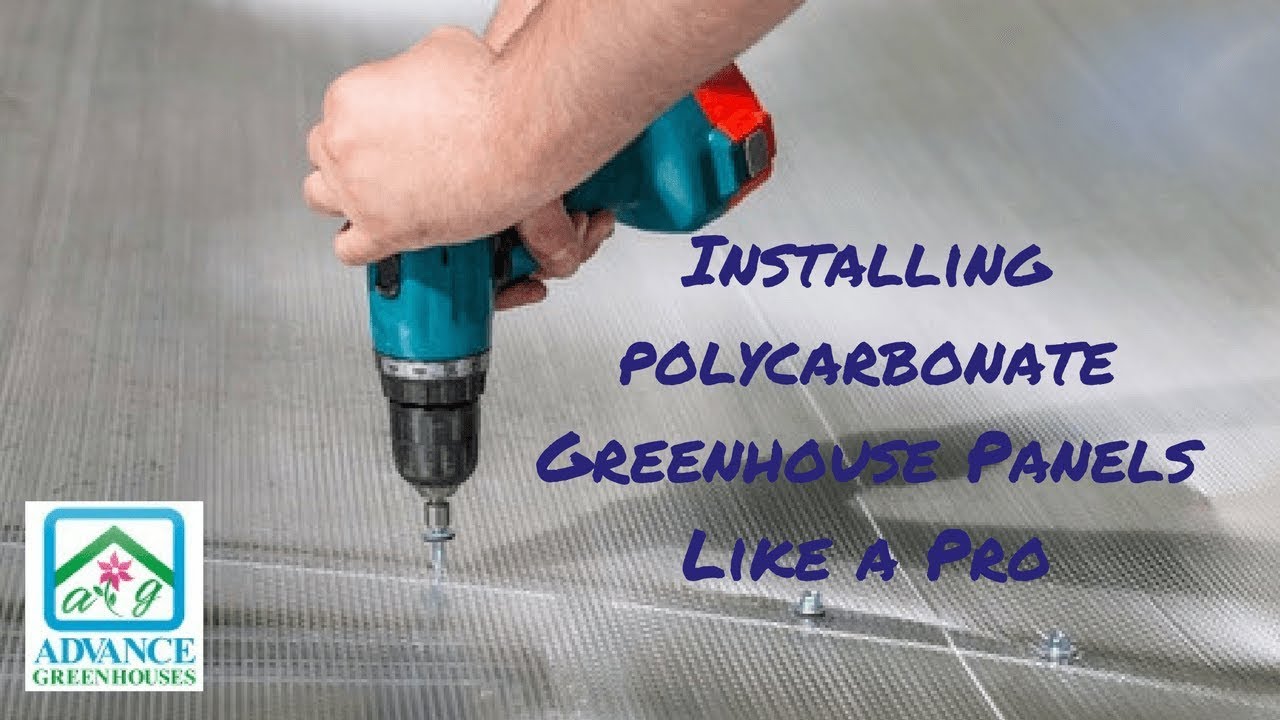To secure polycarbonate panels in a greenhouse, use screws or clips designed for this purpose. Greenhouses require proper installation of polycarbonate panels to ensure longevity and efficiency.
These panels provide insulation, protection from uv rays, and impact resistance. To secure them effectively, utilize screws or clips specifically designed for polycarbonate panels. These fasteners offer a secure grip and prevent panel movement or dislodgment due to wind or other external factors.
By using proper fastening methods, greenhouse owners can ensure the durability and structural integrity of their polycarbonate panels for long-lasting performance.

Credit: www.glazingsystems.co.uk
Importance Of Securely Installing Polycarbonate Panels
Securely installing polycarbonate panels in a greenhouse is crucial for enhanced durability and longevity. Proper installation ensures protection against weather elements, safeguarding the panels from damages caused by rain, snow, and wind. Additionally, securely secured panels prevent accidents, reducing the risk of injury or damage to the greenhouse structure and its contents.
Neglecting to secure the panels can result in costly repairs or replacement in the long run. Therefore, it is important to follow manufacturer guidelines and use appropriate fastening techniques to ensure a tight and secure fit. By taking the time to install polycarbonate panels correctly, greenhouse owners can enjoy a longer lifespan for their panels and a safer environment for their plants.
Tools And Materials Required
Securing polycarbonate panels in a greenhouse requires a few essential tools and materials. You will need a screwdriver to fasten the panels in place. Utilize screws specifically designed for securing polycarbonate panels effectively. Additionally, make use of polycarbonate washers to prevent any damage or cracking.
To reach higher areas, a ladder will be necessary for installation. It is crucial to prioritize safety during the process, so wear safety gloves to avoid injuries and safety goggles to protect your eyes from debris. Ensure that screws are tightened securely to provide stability and durability for your greenhouse structure.
By following these guidelines and using the appropriate tools and materials, you will be able to effectively secure polycarbonate panels in your greenhouse.
How to Secure Polycarbonate Panels in a Greenhouse: Step by Step Guide
Step 1: Preparing The Greenhouse Structure
Inspecting the greenhouse structure thoroughly is the first step in securing polycarbonate panels. Identify any damages or weaknesses present in the existing framework. Reinforce the weak spots or parts if needed. A sturdy and stable structure is vital for panel installation.
Before securing the panels, it is important to clean the frame properly. Remove any dirt, debris, or rust that could affect the adherence of the panels. Use a mild detergent and water to clean the frame and ensure it is free from any contaminants.
Following these steps will help ensure a secure and long-lasting installation of polycarbonate panels in your greenhouse.
Step 2: Choosing The Right Size Of Polycarbonate Panels
To secure polycarbonate panels in a greenhouse, it is crucial to choose the right size for a precise fit. Firstly, measure the dimensions of the greenhouse structure accurately. This step ensures that the panels will fit perfectly and provide optimal insulation.
When selecting the appropriate size of the panels, consider the length, width, and height of the greenhouse. Take note of any curves or angles in the structure that may require custom-cut panels. By choosing the right size, you can guarantee a seamless installation, preventing any gaps or leaks.
This will help maintain the desired temperature and protect your plants effectively. Securely installed polycarbonate panels provide durability and longevity to your greenhouse, ensuring a thriving environment for your plants.
Step 3: Mounting Polycarbonate Panels
To mount polycarbonate panels in a greenhouse, start by placing the first panel at the bottom. Align the panel with the structure carefully. Secure one side of the panel using screws and washers. Repeat this process for the remaining panels.
Step 4: Sealing And Weatherproofing
One important step in securing polycarbonate panels in a greenhouse is sealing and weatherproofing. To create a waterproof seal, it is recommended to apply adhesive tape on the edges of the panels. This tape helps to prevent any water or moisture from entering the greenhouse.

Additionally, covering the screw heads with polycarbonate tape ensures that they are tightly sealed and protected from the elements. It is also crucial to check for any gaps or cracks between the panels and seal them using silicone caulk. This will further enhance the weatherproofing of the greenhouse and ensure its durability.
Taking these measures will help maintain a safe and secure environment for your plants inside the greenhouse.
Regular Inspection And Cleaning
Regular inspection and cleaning of polycarbonate panels in a greenhouse is crucial for their stability and longevity. It is important to inspect the panels for any damages or loose screws that may compromise their integrity. Regular cleaning is also essential to remove debris and dirt that can accumulate over time.
By inspecting the panels, you can identify any cracks or chips that may need immediate attention, ensuring that they are securely in place. Additionally, cleaning the panels regularly prevents the buildup of dirt and debris, enhancing their performance and maximizing light transmission.
With proper maintenance, you can secure polycarbonate panels in your greenhouse, allowing them to effectively protect your plants and provide a conducive environment for growth.
Seasonal Maintenance
Proper seasonal maintenance is key for keeping polycarbonate panels secure in a greenhouse. One important step is to thoroughly check the panels before any extreme weather conditions occur. This allows you to identify any damaged or loose panels that may need to be replaced or reinforced.
Take the time to inspect each panel carefully, looking for cracks, chips, or signs of deterioration. If any issues are found, reinforce the structure accordingly, ensuring a tight fit and minimizing the risk of panels being dislodged. By prioritizing seasonal maintenance and taking proactive measures, you can ensure the longevity and safety of your greenhouse’s polycarbonate panels.
General Safety Precautions
When securing polycarbonate panels in a greenhouse, it is crucial to prioritize general safety precautions. Wearing appropriate safety gear is the first step to ensure your protection. Additionally, always use a stable ladder when accessing higher parts of the greenhouse.

This will minimize the risk of falls or accidents. By following these guidelines, you can create a safe environment for yourself and others working in the greenhouse. Remember, safety should always be the top priority when working with polycarbonate panels in a greenhouse.
Frequently Asked Questions Of How To Secure Polycarbonate Panels In A Greenhouse
How Do You Secure Polycarbonate Panels In A Greenhouse?
To secure polycarbonate panels in a greenhouse, you can use various methods such as using aluminum profiles, screwing the panels to the frame, or using specialized greenhouse panel clips. These methods ensure that the panels stay in place and are protected from strong winds and other external factors.
Can You Use Adhesive To Secure Polycarbonate Panels In A Greenhouse?
Using adhesive to secure polycarbonate panels in a greenhouse is not recommended. Adhesive may not provide enough strength to hold the panels in place, especially during extreme weather conditions. It’s best to use more reliable methods such as using screws or specialized clips to ensure the panels are properly secured.
What Are The Benefits Of Securing Polycarbonate Panels In A Greenhouse?
Securing polycarbonate panels in a greenhouse offers several benefits. It helps to protect the panels from damage caused by strong winds or impact. Secure panels also provide better insulation, preventing heat loss and maintaining a stable environment for plants. Additionally, secure panels reduce the risk of leaks and improve the overall durability of the structure.
How Often Should You Check The Security Of Polycarbonate Panels In A Greenhouse?
It is recommended to check the security of polycarbonate panels in a greenhouse at least once a year. However, it is also important to inspect the panels after any major weather event or if you notice any signs of damage or degradation.
Regular checks ensure that any issues can be addressed promptly, preventing further damage to the greenhouse and its panels.
Are There Any Alternatives To Securing Polycarbonate Panels In A Greenhouse?
Yes, there are alternatives to securing polycarbonate panels in a greenhouse. Some people use plastic cap strips or h-profiles to hold the panels in place instead of using clips or screws. However, it’s important to consider the strength and durability of these alternatives to ensure the panels are securely fastened.
Consulting with a greenhouse specialist can help you choose the best method for your specific needs.
Can I Secure Polycarbonate Panels Without Damaging Them?
Yes, it is possible to secure polycarbonate panels without damaging them. Using specialized clips or caulking strips designed for polycarbonate panels can provide a secure hold without the need for drilling or screwing directly into the panels. This ensures that the panels remain intact and maintain their structural integrity while still being securely affixed to the greenhouse frame.
Conclusion
To effectively secure polycarbonate panels in a greenhouse, it is essential to follow the right techniques and use the necessary tools. By ensuring a proper installation process, you can protect your greenhouse from potential damage and maximize its durability. Start by selecting the appropriate type of panel and frame, considering factors such as thickness and uv protection.
Then, carefully position the panels, ensuring they are tightly secured, to prevent any gaps or leaks. Utilizing compatible fasteners and sealants will also contribute to a secure and stable installation. Regular maintenance, including proper cleaning and inspection, will help identify any issues and allow for timely repairs.
By employing these strategies, you can ensure the longevity and efficiency of your greenhouse, providing the optimal environment for your plants to thrive.

